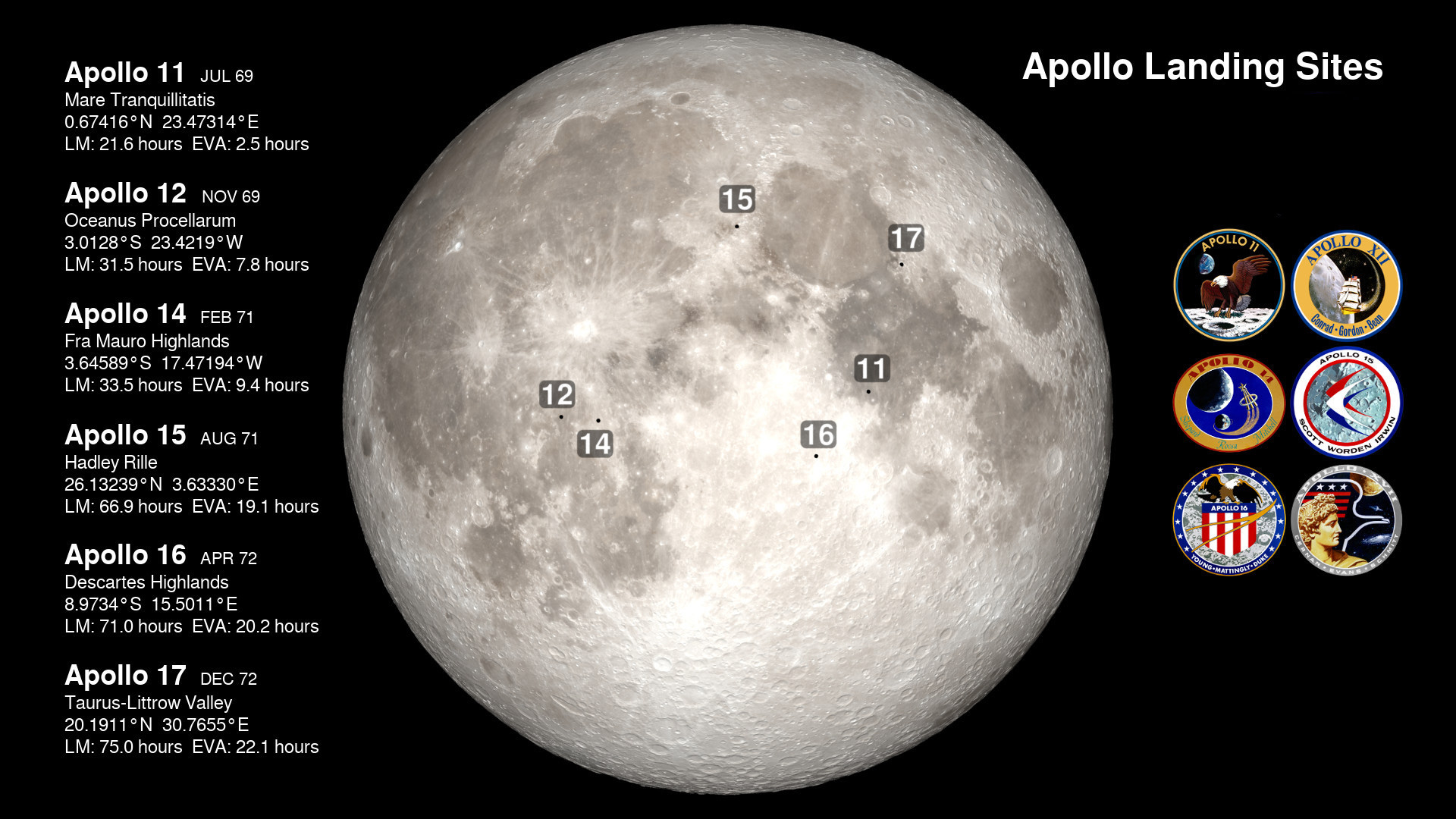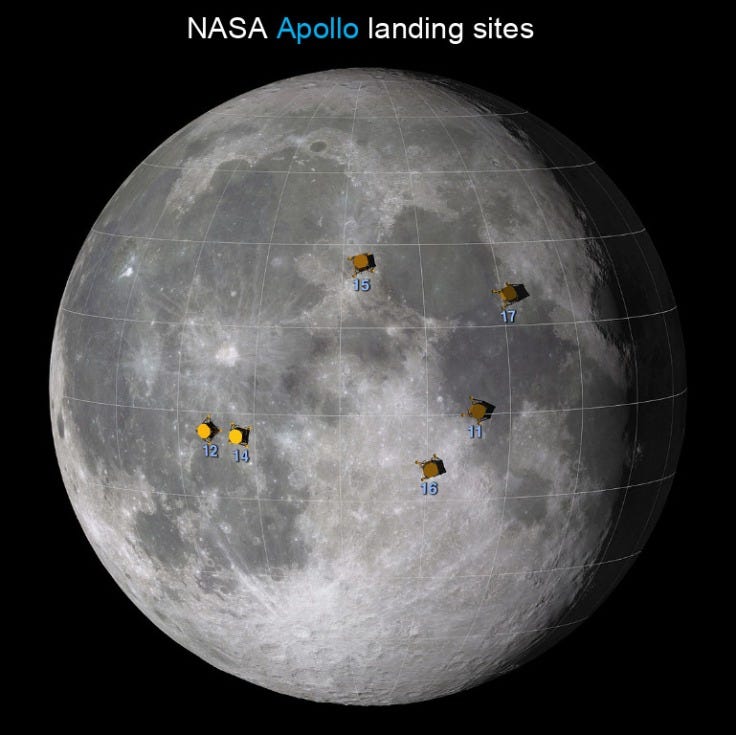Reading menu: Apollo landing sites (and candidates) and their geology
Here is a curated collection of my articles and blog posts on several Apollo landing sites, site candidates, and their geology.

Places on the Moon explored by Apollo astronauts and what we learnt from them
Apollo 11 landing site – The Sea of Tranquility
Then there's the Apollo 15 landing site near Hadley rille which revealed the Moon's dramatic volcanic past.
Meandering rille near Apollo 15 landing site
It is also from Apollo 15 rock samples that we know the Moon's large basins formed several hundred million years before the volcanic eruptions filled them with lava.
Apollo 17 astronauts Jack Schmitt and Eugene Cernan landed in the Taurus-Littrow valley. Remarkably, they sampled ejected material from the impact that created Tycho crater, the material landing on their site from more than a thousand kilometers away!
Sampling material from a thousand kilometers away
They also saw a rolled-down boulder during their exploration. Tracing its source and studying the boulder allowed to infer composition of the rocks present up-slope on the site!
Apollo 17 had another candidate landing site, the lava filled Gassendi crater. The major scientific goal would be to sample the ancient lunar rock materials of the central mountains in the crater. Alas, engineering constraints, particularly lack of high-resolution imagery, meant that a successful landing would've been difficult and the site was dropped in favor of Taurus-Littrow valley.
Lava filled Gassendi crater
The spectacular craters of Aristarchus and Copernicus, hosting central mountains as well, were candidates for the now-cancelled Apollo 17+ landing missions.
Glorious Aristarchus!
A peak inside the Moon with Copernicus
Future Apollo missions were to land in more elusive sites, like a rare crater type found at Hyginus caldera. The aim was to reveal important information about the dynamics of collapse features and also get insights into irregular features like Ina.
The collapsed crater of Hyginus
The Apollo missions not only enabled us to see a dynamic Moon but also transformed our understanding of its origin:
How the Apollo missions transformed our understanding of the Moon’s origin
You can explore all Apollo landing sites on Google Moon.

→ Browse the Blog | About | Donate ♡
